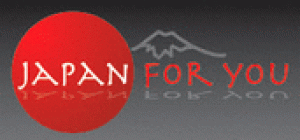Japan: The top 7 things for visitors to experience

Japan specialist travel agency, KIE/Kintetsu International, is offering affordable packages to Japan, along with 7 budget friendly tour options. The characters that make up Japan’s name mean “sun-origin”, which is why it is sometimes referred to as the “Land of the Rising Sun”. A journey to this land will never fail to fascinate and travelers can look forward to a trip of endless discovery, packed with gourmet experiences, indulgent spa treatments, modern art, pop culture, and heritage trails leading to towering castles and mist-shrouded mountains.
Japan is a land of astonishing contrasts. From antiquated temples and kimono-clad geisha girls hurrying between traditional tea houses in Kyoto, to lightning-quick bullet trains carrying sharp-suited businessmen between the high-tech cities of Tokyo and Osaka, Japan is a country where the past meets the future.
One misplaced view is that Japan’s position as the world’s third richest nation makes it an expensive holiday destination. In reality, it can be cheaper to travel in Japan than in most parts of North America and Europe. The “Land of the Rising Sun” is a destination like no other; offering heritage and history one day and hi-tech city living the next.
Kiyomizu, one of the oldest and best known temples in Kyoto, is a Tendi Buddhist temple. The temple dates back to 778 but the present buildings that the visitors can admire were constructed in 1633, during a restoration. The temple is remarkable because of its architecture and the fact that there is not a single nail used in the entire structure. Kiyomizu, meaning ‘clear water’, was named after a nearby waterfall and since the temple is situated on Mount Otowa, it offers a stunning view of the surrounding area.
Built in 1333, Himeji Castle is regarded as the finest surviving example of prototypical Japanese castle architecture. Since it was intact by extensive bombing of the region in WWII it is one of the best preserved castles in the country. Today, Himeji Castle is the largest and most visited castle in Japan. The castle comprises a network of 83 buildings with advanced defensive systems. The structure is admired for a large keep and thick walls as well as paths forming a maze designed to confuse potential attackers.
ADVERTISEMENT
The Hiroshima Peace Memorial Park is dedicated to the legacy of Hiroshima as the first city in the world to suffer a nuclear attack, and to commemorate the victims (100,000 people). The park was built on an open field that was created by the explosion of the A-bomb. Today there are a number of memorials and monuments, museums, and lecture halls, which draw over a million visitors annually. The centerpiece of the park are the ruins of the Genbaku Dome (A-Bomb Dome) standing as an impressive reminder of the devastation.
According to Conde Nast, Kyoto has just received their, “Best City to Visit in Asia” award in 2012. Kyoto is the #1 destination for U.S. travelers visiting Japan.
The Golden Pavilion (Kinkakuji) is a Zen Buddhist temple in Kyoto and one of the most beautiful buildings in the country. As such it draws numerous visitors every year. The temple was built on the grounds of the Shogun Ashikaga Yoshimitsu in 1397. The pavilion was created to hold relics of the Buddha. The top two floors of the building are coated in gold leaf, which is where it got its distinctive name. The temple together with a nearby pond and beautiful garden are one of the most photographed places in Japan.
No trip to Japan is complete without taking the Japanese bullet train, the Shinkansen. The Shinkansen can reach a top speed of 300 kph (180 mph) which would make any collision devastating. Therefore there are no road or rail crossings on Shinkansen tracks. The network presently links most major cities on the islands of Honshu and Kyushu, with construction of a link to the northern island of Hokkaido underway. Though largely a long-distance transport system, the Shinkansen also serves commuters who travel to work in metropolitan areas from outlying cities.
Mount Fuji (Fuji-san) is not only the highest mountain in Japan (3,776 m, 12,389 ft), but it is also the symbol of the country. Its exceptionally symmetrical cone is frequently depicted in art and photographs. Fuji is an active stratovolcano, but has not erupted since 1707. It lies about 100 km (62 mi) south-west of Tokyo, and can be seen from there on a clear day. Approximately 200,000 people climb Mount Fuji each year.
Many tourists familiar with Japan agree that the local cuisine is one of the best in the world. Besides sushi that gained worldwide popularity, ramen, or Japanese noodle dish, is a true wonder. Originally a Chinese dish, ramen first became popular in Japan in the 19th century. It consists of Chinese-style wheat noodles served in a meat- or fish-based broth, often flavored with soy sauce, and with toppings such as sliced pork, dried seaweed, green onions, and corn. Almost every region has its own version of the dish. We can offer a special sushi and sake tour.

